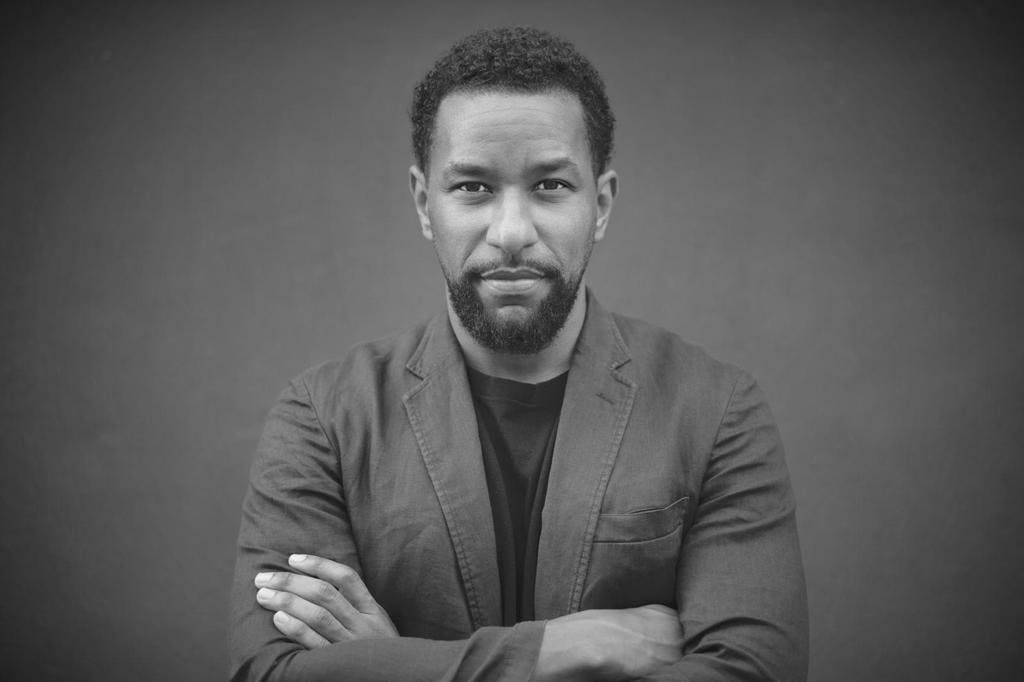Beyond a Hollow Account of Musical Interracialism
Thinking about music as a unifying force without examining and deconstructing the patterns of power underlying its cultural production is a hollow account of musical interracialism, argues Willemien Froneman.

South African pop singer Refentse Morake, who performs under his first name and primarily in Afrikaans, was introduced to a wider audience when a cellphone video of him singing and playing guitar garnered over 100,000 views overnight in 2015. His undeniable talent was not the only reason the video went viral. Nor, as journalist Nick Dall noted, was the appeal only that Refentse, who is Black, was singing “in perfect, unaccented Afrikaans, the language once associated with apartheid.” It was also that Morake was singing “De la Rey,” a song that has proved controversial since its 2006 release for its plaintive cry to the spirit of Koos de la Rey, an Afrikaner military commander in the second South African war.
For many, it was electrifying to hear the song—considered by some as “an attempt to rebrand Afrikaners from oppressors to victims”—delivered so beautifully by someone who looked like Refentse.
Since then, Refentse’s career has been followed closely, even on South Africa’s white-right news platforms, where he is lauded for his proficiency and love for the Afrikaans language. Indeed, in the reception to his music, which has been marketed primarily to white audiences, there has been little attempt to veil that Refentse’s appeal in some quarters lies in the supposed dissonance between his Black body and his white-sounding voice.
Refentse, too, sees his music, and music in general, as potentially creating connections across difference.
“We have so many problems in South Africa and so many things that have the potential to divide us,” the then 19-year-old said in an interview in 2017. “It’s the one thing that can heal our wounds. No matter our race or gender we can all unite behind music.”
We have so many problems in South Africa and so many things that have the potential to divide us,” the then 19-year-old said in an interview in 2017. “It’s the one thing that can heal our wounds. No matter our race or gender we can all unite behind music.
The idea that music is a universal expression of creativity across the human experience that can be the glue that holds people together feels intuitive and familiar. In the 1990s, as the country emerged from apartheid, many South African musicians expressed this sentiment, particularly in the context of interracialism.
“It’s like an umbilical c(h)ord that ties us all together,” mused famed guitarist Ray Phiri in a 1993 interview. “[My quest is] to find that essential musical element that will strike a common chord in the hearts of all South Africans and eventually reverberate harmoniously throughout the entire global community,” he said.
Phiri was speaking about his much-publicised collaboration with Nico Carstens, an accordionist of boeremusiek—literally translated, farmers’ music. This genre of concertina-based folk music, which is commonly associated with the white Afrikaans-speaking working-class experience, is illustrative of the limitations of thinking that music, in and of itself, is a great unifier. The history and present expression of boeremusiek, and Afrikaans pop music in general, suggest that thinking about music as a unifier without examining and deconstructing the patterns of power underlying its cultural production is a hollow account of musical interracialism that can leave racial prejudice and divisions to fester.
The idea that music is a universal expression of creativity across the human experience that can be the glue that holds people together feels intuitive and familiar. In the 1990s, as the country emerged from apartheid, many South African musicians expressed this sentiment, particularly in the context of interracialism.
“It’s like an umbilical c(h)ord that ties us all together,” mused famed guitarist Ray Phiri in a 1993 interview. “[My quest is] to find that essential musical element that will strike a common chord in the hearts of all South Africans and eventually reverberate harmoniously throughout the entire global community,” he said.
Phiri was speaking about his much-publicised collaboration with Nico Carstens, an accordionist of boeremusiek—literally translated, farmers’ music. This genre of concertina-based folk music, which is commonly associated with the white Afrikaans-speaking working-class experience, is illustrative of the limitations of thinking that music, in and of itself, is a great unifier. The history and present expression of boeremusiek, and Afrikaans pop music in general, suggest that thinking about music as a unifier without examining and deconstructing the patterns of power underlying its cultural production is a hollow account of musical interracialism that can leave racial prejudice and divisions to fester.
Like country music in the United States, boeremusiek and related genres of Afrikaans popular music in South Africa have routinely, throughout the 20th century, embraced a hollow form of interracialism, one in service of racial myth making. Like country music, boeremusiek has been continually framed in music journalism and scholarship as not only speaking to white experiences but being, in fact, white music, despite a small but significant archival record suggesting otherwise.
Take, for instance, one strand of descriptions such as in the writings of Dutch-born boeremusiek collector Jo Fourie, whose life obsession became elevating the stature of boeremusiek and, along with it, Afrikaner people and culture in service of Afrikaner nationalism. For commentators like Fourie, beauty and gainliness were not what the concertina was about. Its charm lay in its existential, mesmerising unpleasantness.
“For a long time,” Fourie wrote in a 1949 lecture on boeremusiek, “I found the screeching sound of the concertina unbearable, until I heard it from a distance of half a mile one evening as I was sitting on the stoep in near darkness. And then I heard it. From that moment on my opinion about the thing changed and it is as if I relive that evening’s sensation every time I hear it.”
Such sketches of the unsettling charm of concertina music are set against what is portrayed as deep South African wilderness. Invariably, it is precisely the remote setting, made wilder by the cover of darkness, that provides the stillness in which the charm of the instrument becomes clear—but only from a safe distance.
These sonic tropes of colonial nostalgia are not limited to South Africa or to concertina playing. It describes a white aesthetic disposition to a sonic encounter with Blackness seemingly particular to contexts where servitude is portrayed as Black people’s natural state.
For example, Karen Linn, an archivist in the Manuscript Division of the U.S. Library of Congress, mentions the romanticism and exoticism evoked by the “old American image of white folks listening from the porch of the big house to the evening banjo strummings of an African-American male.” Music professor Eric Lott, in his essay “Love and Theft: The Racial Unconscious of Blackface Minstrelsy,” cites an 1897 interview with Ben Cotton, who explained how he learned to play the instrument: “I used to sit with them [Black people on Mississippi riverboats] in front of their cabins, and we would start the banjo twanging, and their voices would ring out in the quiet night air in their weird melodies.”
Composer Frederick Delius reverts to the same racialised linguistic codes when enthusing about his musical experiences between 1884 and 1885 on a Florida orange plantation.
“As a young man I left a manufacturing town in the north of England to spend a year and a half on an orange plantation in Florida, where I lived in the greatest solitude surrounded only by Negroes,” he said, according to Daniel Grimley, professor of music at Merton College, Oxford. “When in the evening twilight I would sit out on my veranda, the sound of the singing of the Negroes would reach me from the distance. It seemed wonderful amid such glorious nature. Before me stretched the infinite breadth of the St Johns river and around me the ancient forest with its indescribably strange calls of buzzing insects, of frogs and night birds.”
These descriptions illustrate the flawed logic in which a white listener can be deeply moved by Black music and also want to keep it at a distance while dehumanising those who produce it. Not only that. It then becomes possible to appropriate the music as white, as Afrikaner intelligentsia like music conductor Anton Hartman did at the height of apartheid.
“Don’t our old country and people have their peculiarities!” exclaimed Hartman, who was also a member of the Broederbond, a secretive all-male Afrikaner nationalist society. Hartman was commenting at the time, in 1955, on the extraordinary fact that boeremusiek and Coloured music were used interchangeably in the first half of the 20th century. His explicit recognition of the genre’s multiracial roots was accompanied by the claim that it was “the white man’s music”:
“It was discovered in the early days of white existence in S.A. [South Africa] that some slaves and Coloureds had an innate talent for music and soon the white man’s music at dance parties was performed by these people. The white man left it to them, just like he left certain forms of labour to them. The music was performed by people of colour for such a long time and on such a large scale that they too put their stamp on it. But in its essence, it was Afrikaans folk music and as the walls of prejudice broke down, it resounded from our cities, towns and far-flung plains.”
Painting boeremusiek at once as a quaint anomaly, the consequence of racist labour practices, a site for the breakdown of race prejudice, a fount of innovation, and, despite all of this, essentially white, Hartman’s words undermine the notion that music is inherently just. His words force us to entertain the reality that music is a site where the labour of Black people to develop knowledge, in this case of instruments such as the concertina owing to some ‘innate’ musical ability, is misattributed, somehow, to the white man.
Seen in the context of this history, Refentse’s music and his reception among white audiences should not be taken at face value. The narrative around his meteoric rise from the only-Black-kid-in-class to teen busker to young-adult pop sensation is taken to be symbolic of South Africa transcending its racial past. The arc of his life lends itself to such utilitarian uses. For instance, as a six-year-old growing up in Sebokeng, one of several townships established on the peripheries of Johannesburg by the apartheid state to house Black workers, he was offered entry to the Afrikaans school where his grandmother worked as a janitor. While at the school, he learned the language by listening to Afrikaans music CDs and became a self-styled Afrikaans troubadour in high school, as a way to negotiate and survive the complex social world into which he was thrown.
Refentse’s music plays undisguisedly on the pleasures of racial ambiguity. Much of his vocals are delivered in the labialised drawl and affected, overrounded vowels that characterize white Afrikaans pop balladry. Other tracks deliberately employ (meta)linguistic and musical code switching as markers of race. The video for one song, “Daai Deng,” switches back and forth between two acoustic and spatial settings crudely bifurcated as ‘Black’ and ‘white’: one featuring, against the backdrop of township scenes, a Leon Schuster-inspired, mocking white impersonation of a Black-accented Afrikaans (the “daai deng” of the title); the other, an accentless white pop refrain replete with aerobics-style dancing and Gauteng business park glamour. The video for “Vuil Vanderbijl,” astoundingly, sees Refentse casting himself in the role of the Black protagonist of a racist 1950s boeremusiek standard, titled “Outa in die langpad,” here evoked through the strains of the tune’s well-known concertina riff.
Since his music doesn’t thematise his upbringing or lived experience, Refentse seems to play into the expectations of his target audiences. Given the prevalence of racial stereotypes in his music, and the often unflattering and prejudicial light in which he is portrayed, as in the video for Vuil Vanderbijl, it seems that his music is not inoculated against the racist undercurrent in the genre. It could be that he is fully aware, and that awareness is mediated by his genuine enjoyment of the music and its commercial success. Whatever the case, his reception among white audiences points to the need to think beyond intercultural, interracial contact, representation, and inclusion as evidence that music has undone the past and created a new, equitable present.




